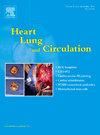Symptomatic Neonates With Tetralogy of Fallot: Shunt or Primary Repair?
IF 2.2
4区 医学
Q2 CARDIAC & CARDIOVASCULAR SYSTEMS
引用次数: 0
Abstract
Background
The optimal management strategy for symptomatic neonates with tetralogy of Fallot is unclear. We compared the outcomes of staged repair (SR) (shunt palliation followed by complete repair) and primary repair (PR) in two institutions that have each exclusively adopted one of these strategies.
Method
We retrospectively compared 65 symptomatic neonates who underwent shunt palliation between 1993 and 2021 at the Royal Children’s Hospital, Melbourne, Australia with 38 symptomatic neonates who underwent PR between 2005 and 2018 at the Children’s National Hospital, Washington, USA. Median follow-up duration was 8.0 (interquartile range 2.9–13.5) years.
Results
After the initial procedure, hospital mortality (shunt 4.6% vs PR 7.9%; p=0.50) and 5-year survival (shunt 94%; 95% confidence interval [CI] 84%–98% vs PR 89%; 95% CI 72%–96%; p=0.21) were not significantly different. The SR group had shorter durations of cardiopulmonary bypass and intensive care admission during the neonatal period, but a higher burden of unplanned re-interventions before discharge. Five-year freedom from re-interventions was not significantly different (shunt 63%; 95% CI 49%–74% vs PR 49%; 95% CI 29%–66%; p=0.13). Postoperative morbidity, mortality, and re-interventions were not significantly different among 13 propensity score–matched pairs balanced for operative weight. For neonates weighing <3 kg, PR was associated with significantly more early re-interventions.
Conclusions
In symptomatic neonates with tetralogy of Fallot operated at two institutions with distinct treatment protocols, no statistically significant difference in medium-term survival and re-intervention was observed between the two strategies. SR was associated with lower neonatal morbidity but more unplanned re-interventions before discharge. PR in neonates weighing <3 kg may result in more early re-interventions.
有症状的新生儿法洛四联症:分流还是初级修复?
背景:有症状的新生儿法洛四联症的最佳治疗策略尚不清楚。我们比较了两家机构的分期修复(SR)(分流姑息后完全修复)和初级修复(PR)的结果,这两家机构都专门采用了其中一种策略。方法:回顾性比较1993年至2021年在澳大利亚墨尔本皇家儿童医院接受分流姑息治疗的65名有症状的新生儿与2005年至2018年在美国华盛顿儿童国家医院接受PR治疗的38名有症状的新生儿。中位随访时间为8.0年(四分位数间距为2.9-13.5年)。结果:初次手术后,住院死亡率(分流4.6% vs PR 7.9%;P =0.50)和5年生存率(分流94%;95%置信区间[CI] 84%-98% vs PR 89%;95% ci 72%-96%;P =0.21),差异无统计学意义。SR组在新生儿期接受体外循环和重症监护的时间较短,但出院前计划外再干预的负担较高。5年再干预自由度无显著差异(分流63%;95% CI 49%-74%, PR 49%;95% ci 29%-66%;p = 0.13)。术后发病率、死亡率和再干预在13对倾向评分匹配的手术体重平衡组中无显著差异。结论:有症状的法洛四联症新生儿在两种治疗方案不同的机构手术,两种治疗方案在中期生存率和再干预方面无统计学差异。SR与较低的新生儿发病率有关,但与出院前更多的计划外再干预有关。新生儿体重PR
本文章由计算机程序翻译,如有差异,请以英文原文为准。
求助全文
约1分钟内获得全文
求助全文
来源期刊

Heart, Lung and Circulation
CARDIAC & CARDIOVASCULAR SYSTEMS-
CiteScore
4.50
自引率
3.80%
发文量
912
审稿时长
11.9 weeks
期刊介绍:
Heart, Lung and Circulation publishes articles integrating clinical and research activities in the fields of basic cardiovascular science, clinical cardiology and cardiac surgery, with a focus on emerging issues in cardiovascular disease. The journal promotes multidisciplinary dialogue between cardiologists, cardiothoracic surgeons, cardio-pulmonary physicians and cardiovascular scientists.
 求助内容:
求助内容: 应助结果提醒方式:
应助结果提醒方式:


